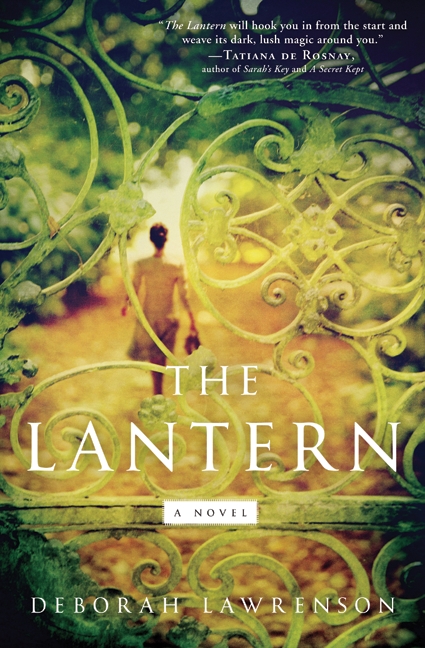
The Lantern, by Deborah Lawrenson
Taken from the jacket copy:
“Meeting Dom was the most incredible thing that had ever happened to me. When Eve falls for the secretive, charming Dom in Switzerland, their whirlwind relationship leads them to Les Genévriers, an abandoned house set among the fragrant lavender fields of the South of France. Each enchanting day delivers happy discoveries: hidden chambers, secret vaults, a beautiful wrought-iron lantern. Deeply in love and surrounded by music, books, and the heady summer scents of the French countryside, Eve has never felt more alive.
But with autumn’s arrival the days begin to cool, and so, too, does Dom. Though Eve knows he bears the emotional scars of a failed marriage—one he refuses to talk about—his silence arouses suspicion and uncertainty. The more reticent Dom is to explain, the more Eve becomes obsessed with finding answers—and with unraveling the mystery of his absent, beautiful ex-wife, Rachel.
Like its owner, Les Genévriers is also changing. Bright, warm rooms have turned cold and uninviting; shadows now fall unexpectedly; and Eve senses a presence moving through the garden. Is it a ghost from the past or a manifestation of her current troubles with Dom? Can she trust Dom, or could her life be in danger?
Eve does not know that Les Genévriers has been haunted before. Bénédicte Lincel, the house’s former owner, thrived as a young girl within the rich elements of the landscape: the violets hidden in the woodland, the warm wind through the almond trees. She knew the bitter taste of heartbreak and tragedy—long-buried family secrets and evil deeds that, once unearthed, will hold shocking and unexpected consequences for Eve.”
Sounds delicious, no?
Now, this isn’t a real review where I dissect the novel and say intelligent things about motifs and character development. Although, I will say that there are some strong motifs–lavender!–and the characters are beautifully complex. I did find myself a little let down by the ending, and the threads didn’t pull together in the way that I wanted, however. Also–Dom is no Maxim de Winter. But who is?
What is really magnificent about The Lantern is how the author took inspiration and transformed it. So much of the novel is related to Daphne du Maurier’s Rebecca. Dom has a mysterious first wife who vanished under questionable circumstances. Bodies are found on the property. Eve (we never learn her real name, just like the protagonist in Rebecca) feels haunted, literally and symbolically, by the presence of Rachel and another presence in the house. Like Manderley, Les Genévriers is its own character, alive in its history and teeming with the shades of people who lived there. Even Rachel’s name comes from another du Maurier novel.
I love the modern gothic sensibility, and the way she was able to create a male lead that felt contemporary and real, but still had the sexy-broody-older-man characteristics of the Byronic heroes I adore so much. Another problem she surmounted was the occasionally “passive ingenue” issues that Gothic heroines typically have (Cathy from Wuthering Heights and Jane Eyre excluded). While we love the second Mrs. de Winter just the way she is, it would be difficult to stomach a twenty-first century character wandering around crying and imagining that her husband hates her. Eve straddles the tropes of the genre and the active qualities necessary in a contemporary protagonist, and we still get to keep the claustrophobic lost feeling that gothic heroines exhibit.
Anyway, a lovely book with lovely references to one of my all-time favorite novels. Highly recommend if you like gothic, modern gothic or flowers. If you are easily bored by pages of flower description, this may not be for you.
